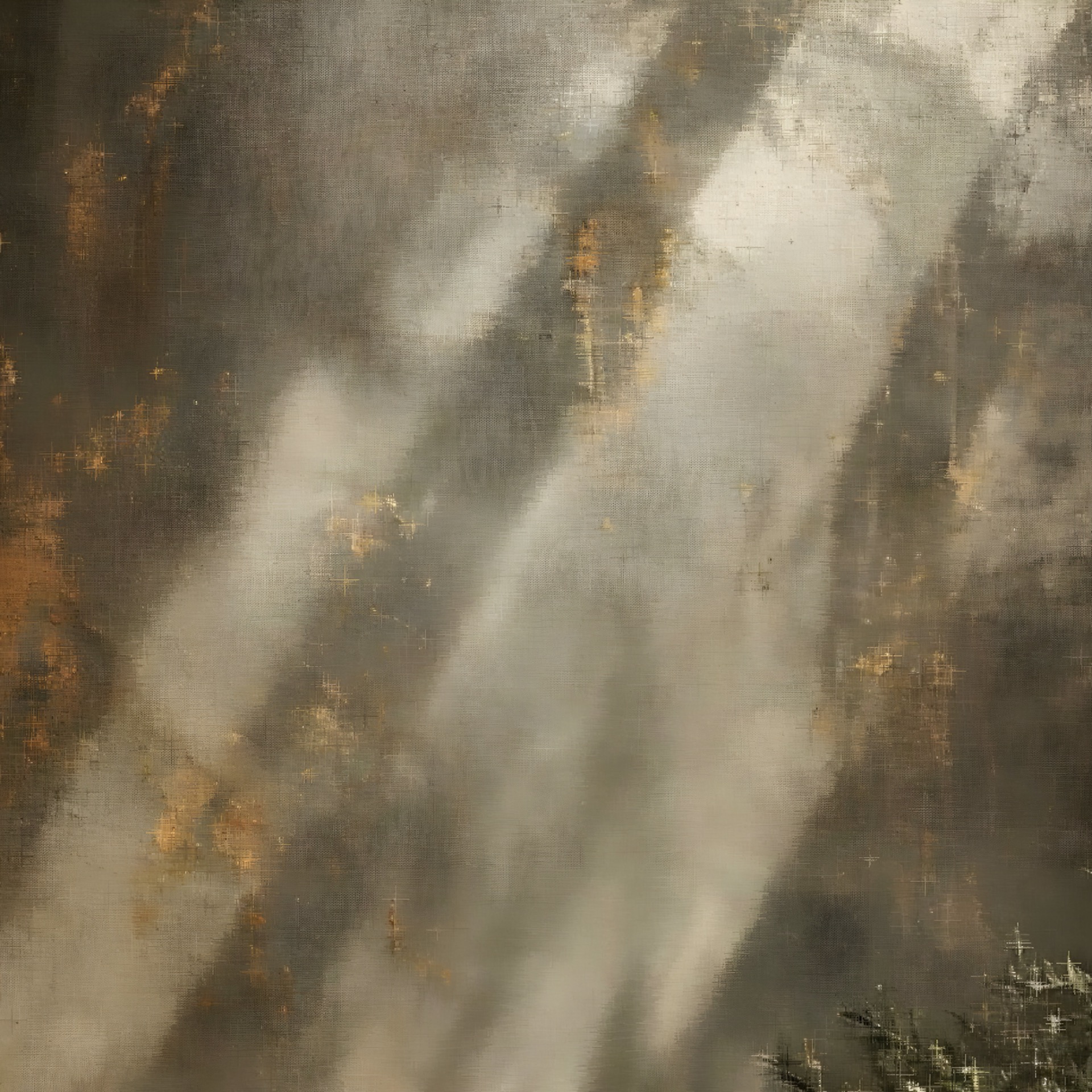Detailed Candle Burning Analysis: Tunneling, Wax Types, and Dried Plant Effects
In the first 6 hours of burning, essential aspects of candle behavior were observed, including tunneling formation, the influence of wax type, and the effect of dried plants on the process. Here is a clear and detailed presentation of the results.
1. Candle Tunneling: Causes and Observations
Tunneling occurs when the wax burns only around the wick, leaving a layer of unmelted wax along the edges. This phenomenon was observed under the following conditions:
Insufficient Initial Burn: Candles that were not burned long enough during the first use (about 1 hour per inch of diameter) developed tunnels. Wax has a "memory," and if it does not melt fully at the beginning, tunneling becomes inevitable.
Inadequate Wick: Wicks that were too small for the container size did not generate enough heat to melt the wax all the way to the edges.
Short Burn Time: Candles extinguished too early left the top layer of wax unmelted, leading to tunneling in subsequent burns.
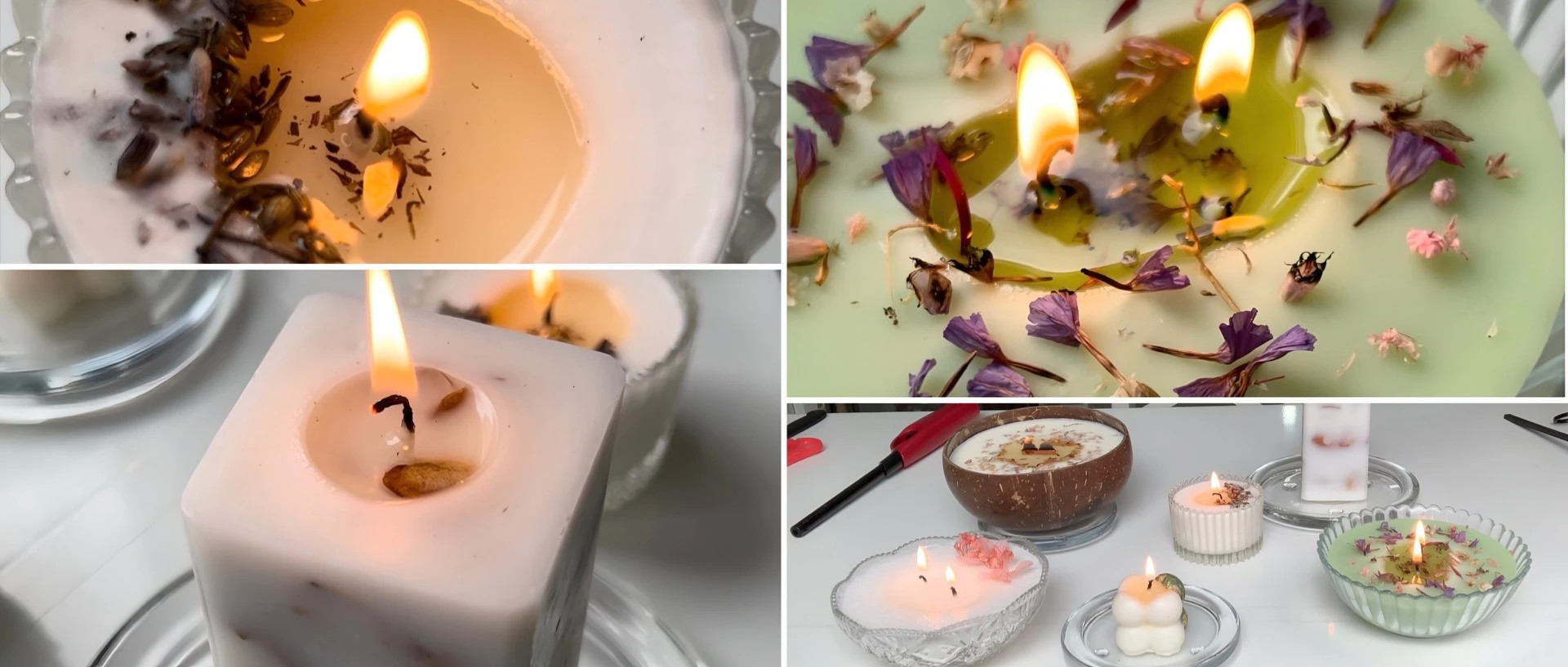
2. Influence of Wax Type on Burning
The type of wax used had a significant impact on how the candles burned. Here is how different wax types performed:
Soy Wax
- Uniform Burning: Due to its low melting point, soy wax melted evenly, reducing the risk of tunneling.
- Slow Burning: Soy wax candles burned more slowly, allowing for a complete and efficient burn.
- Observation: Soy wax candles showed the lowest tendency to form tunnels.
Bee Wax
- Stable Burning: The high melting point of bee wax ensured a slow and even burn.
- Clean Flame: Bee wax candles produced a steady flame without smoke or residue.
- Observation: Tunneling was minimal, but the burn was less intense due to the high temperature.
Coconut Wax
- Efficient Burning: Coconut wax melted at lower temperatures, providing an even and efficient burn.
- Scent Retention: Coconut wax candles retained essential oils well, offering a pleasant olfactory experience.
- Observation: Tunneling was rare, and the candles burned cleanly and uniformly.
Paraffin Wax
- Fast Burning: Paraffin candles burned faster but had a higher tendency to form tunnels.
- Observation: Tunneling was frequent, especially if the wick was not large enough for the container.
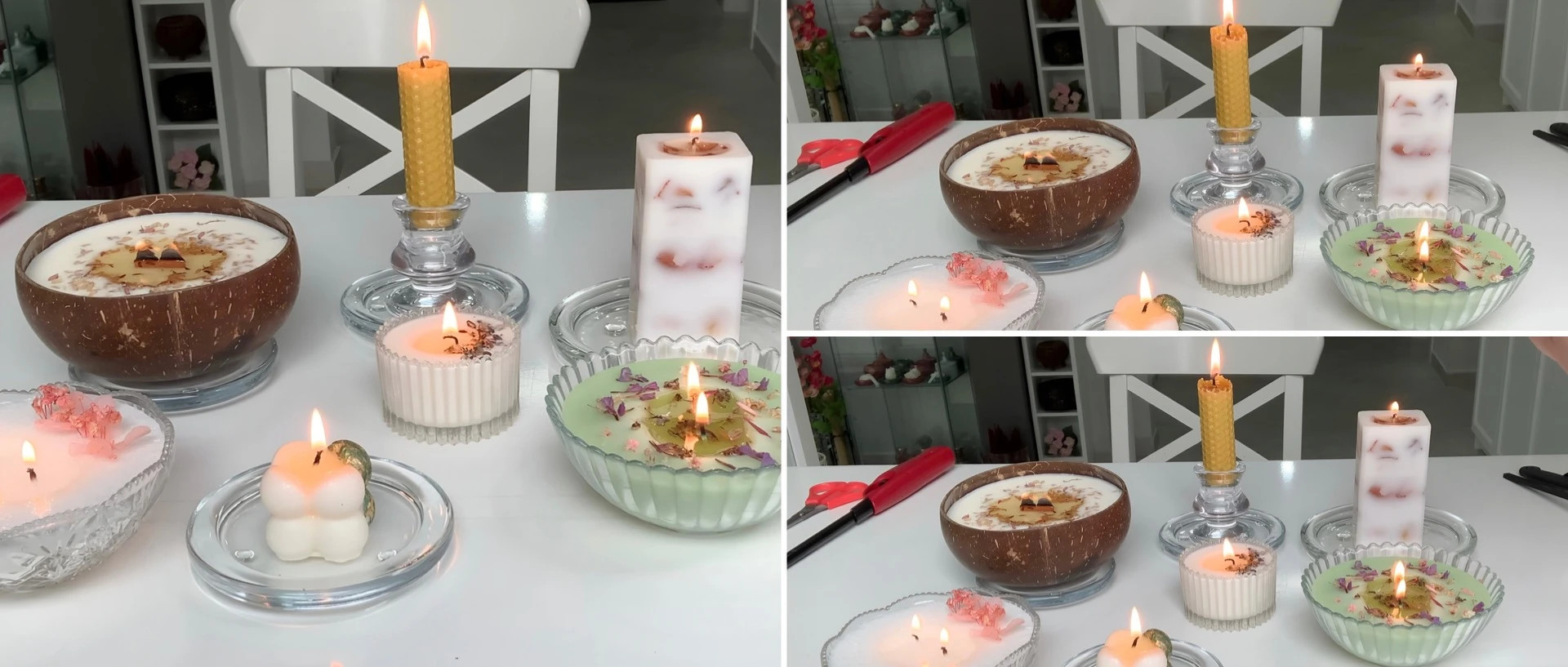
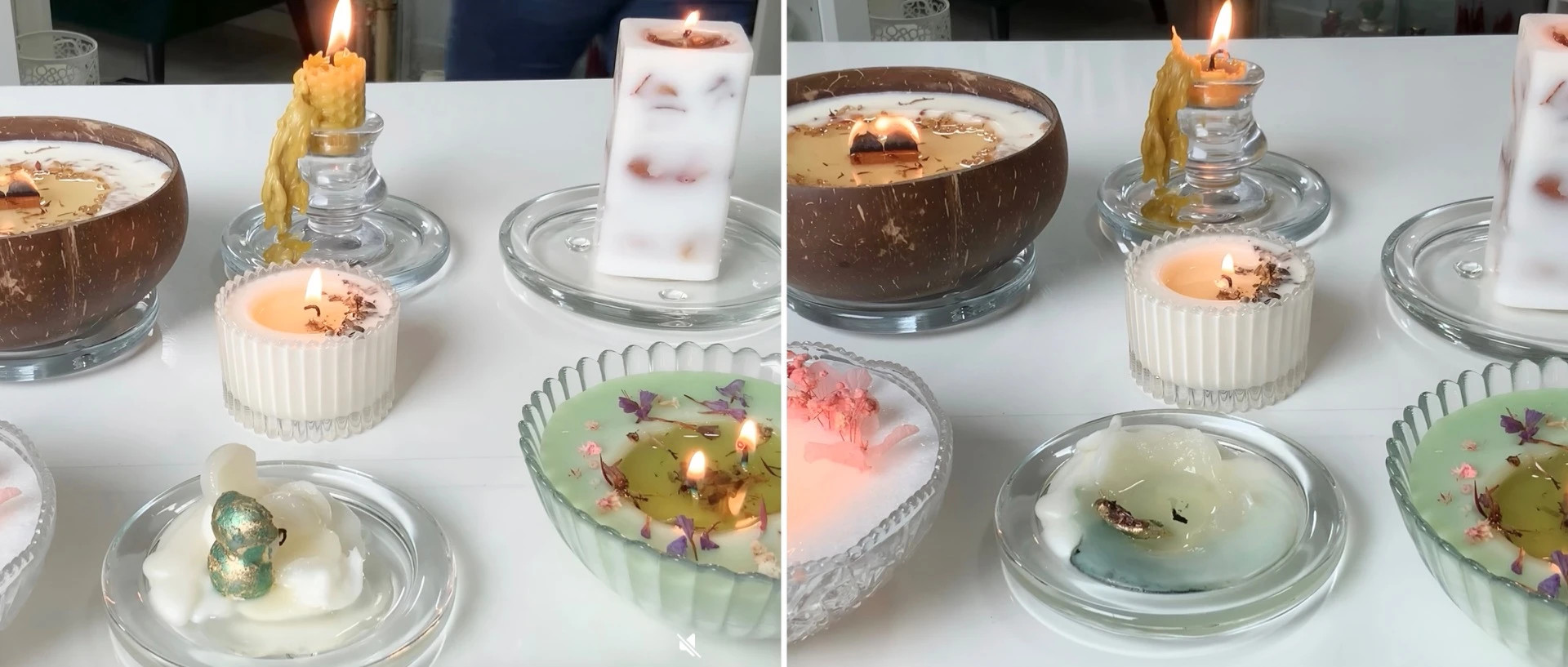
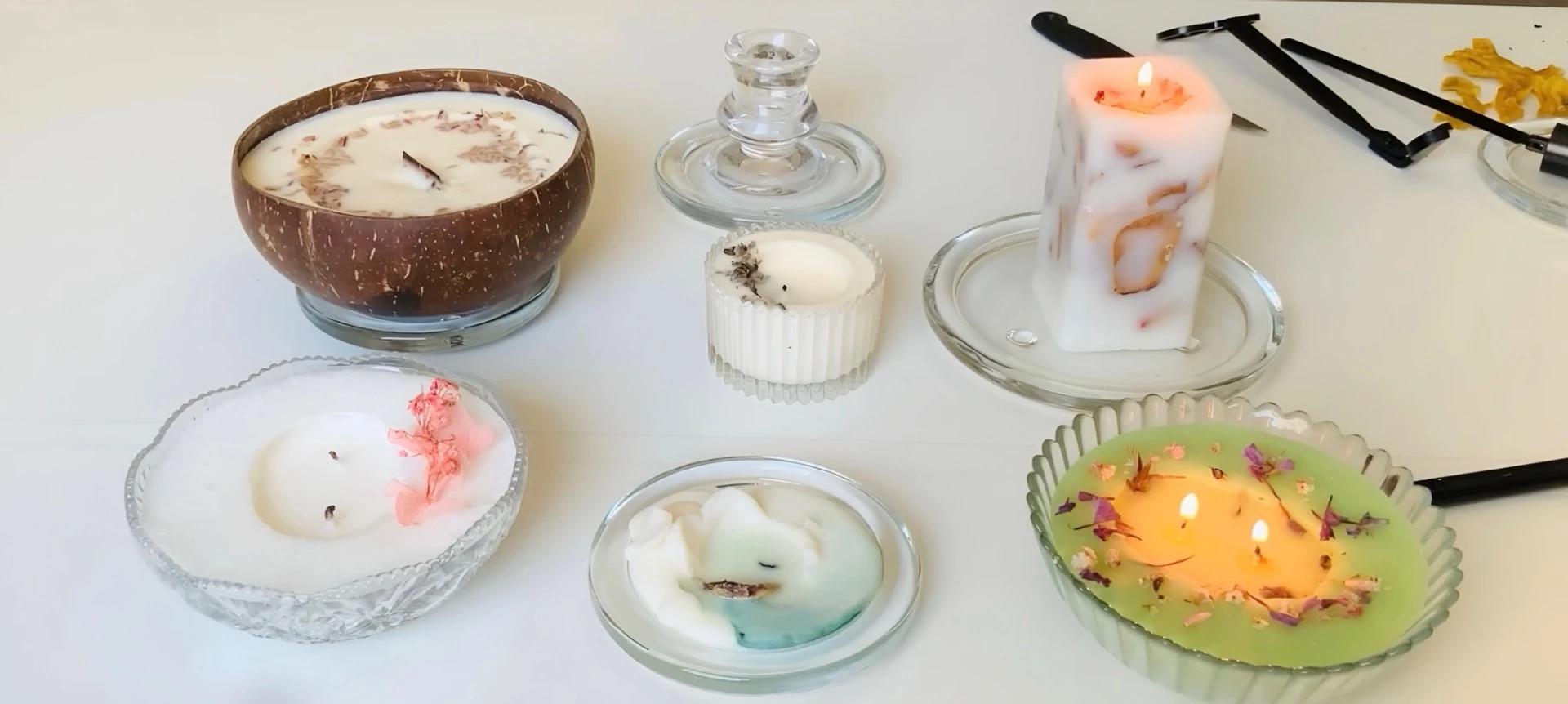
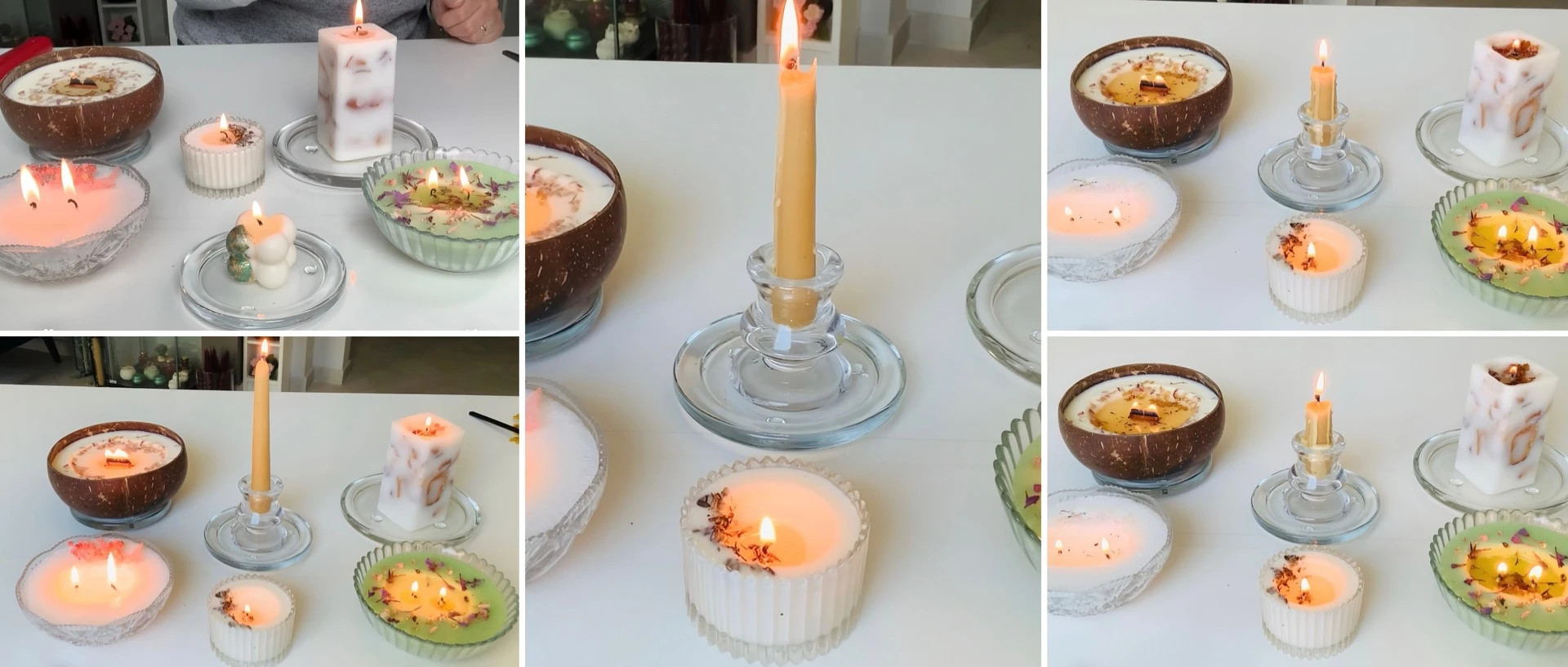
3. Influence of Dried Plants on Burning
Dried plants added to candles had a significant impact on how they burned:
- Wick Obstruction: Plants placed too close to the wick reduced flame intensity or extinguished the candle.
- Increased Risk of Tunneling: Plants hindered even heat distribution, promoting tunnel formation.
- Aesthetic vs. Functional: While dried plants enhanced the candle's appearance, improper placement negatively affected performance.

Recommendations for Optimal Burning
First Burn: Let the candle burn long enough (1 hour per inch of diameter) to melt the entire surface.
Wax Choice: Opt for waxes like soy or coconut for an even and slow burn.
Plant Placement: Avoid placing dried plants too close to the wick to ensure a stable flame.
Wick Maintenance: Trim the wick to 5–6 mm before each use to prevent buildup and uneven burning.
By applying these best practices, you will achieve an optimized experience with your candles and avoid unnecessary wax waste!
Thank you for reading this article. We hope the information is helpful to you.
Enjoy your experience!
With love! The TCandle HomeMade Team
